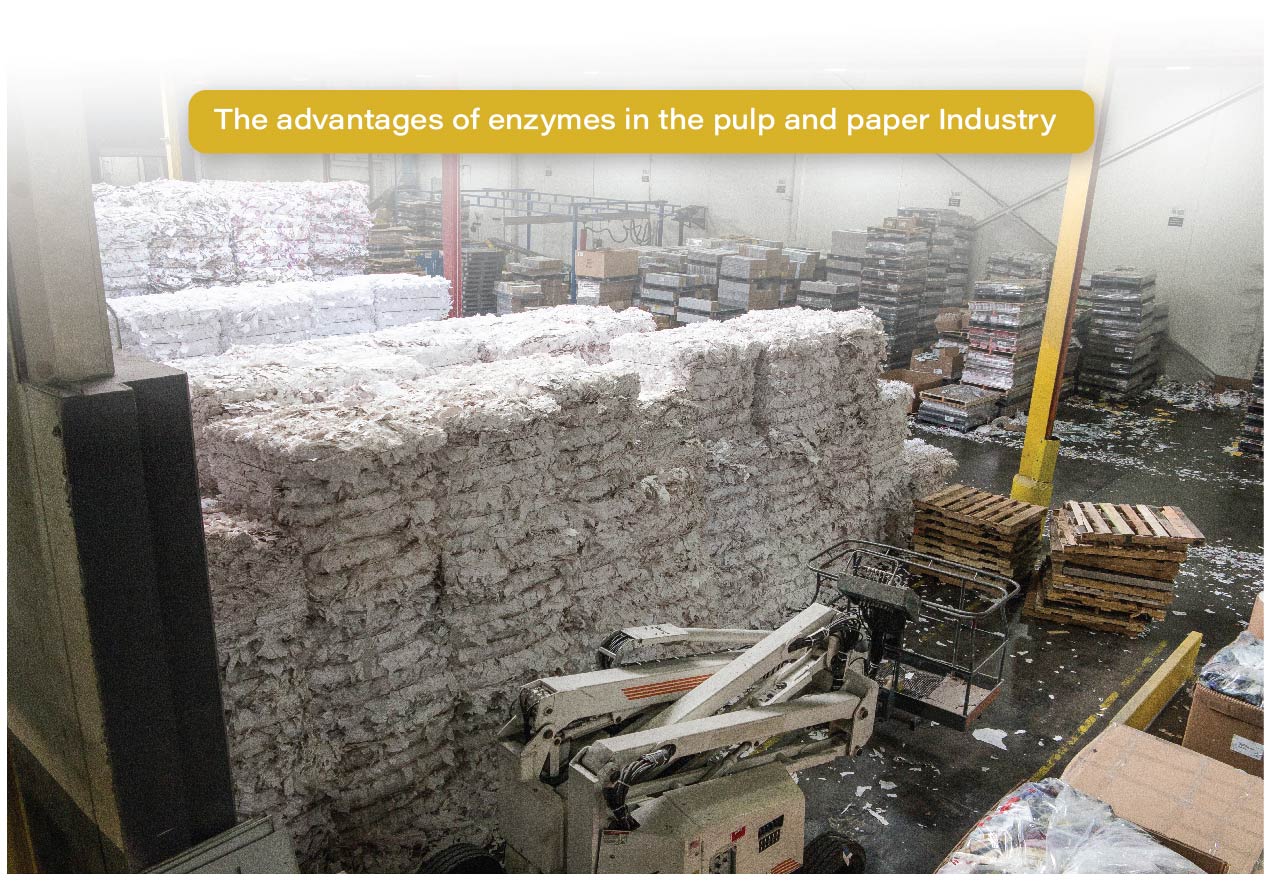The Advantages Of Enzymes In The Pulp And Paper Industry


Papers are an important resource in our life. We can utilize them in multiple ways as per our
needs. But are we aware of the procedure of the pulp and paper industry for its
transformation? How often do we know about the method of unprocessed resources like cotton
or wood that get converted into white, crisp sheets of paper?
The Role Of Enzymes In The Paper Industry
The word “paper” comes from the papyrus plant. In Egypt, this species thrives in profusion along
the shores of the River Nile. They removed the plant’s stem’s fibre part, bent it at the proper
angles, and then arranged it parallel to one another. They would draw this kind of crisscross
design on a sheet, which was then compressed and processed to make paper.
Using mulberry with other fibres and trash, a Chinese official by the name of Ts’ai Lun first
produced paper sheets for paper making in 105 AD. It then expanded all across the globe. In
Europe, there were numerous paper mills functioning by the 14th century. For a long significant
duration after that, the paper-making technique remained unchanged.
Manufacturing paper and pulp is a multifaceted operation that integrates many various factors.
The process begins by removing the necessary fibre from the raw resources, and this fibre is
then pounded into paper pulp. Then, by injecting particular chemicals, they modify the paper’s
colour, chemical, mechanical, ecological, and other elements. After that, they run this remedy
via meshes. Such meshes, which resemble glass, are composed of a non-corroding,
non-mobile element like stainless steel or brass. The length of the paper sheet in this
framework is determined by the open surface. Finally, it is dried and compressed to produce the
paper.
Paper was once created by hand earlier in the lifetime, which was a labour-intensive procedure
in the past when there weren’t enough technical advancements in the paper production
industry. Then, the paper began to be manufactured economically at massive scales utilizing
newly invented machines in the paper industry. And here, the use of enzymes is the most
recent innovation in this area. The entire papermaking sector has undergone rapid change
because of pulp and paper enzyme technology.
Advantages Of Enzymes In The Paper Industry
1. Strengthens The Paper Functionality
Lignin is taken out of the chemical pulp through the process of bleaching. This is a crucial phase
to increase the paper’s appearance and usability. The usage of chlorine and other
chlorine-based compounds has increased lately. These compounds have extremely toxic
consequences that are bad for the environment. An improved, straightforward, and less
expensive substitute is enzymes. Two methods—hemicellulose enzymes and ligninolytic
enzymes—based on newly found pulp and paper enzymeshave been proposed for the
process of papermaking. Hemicellulose enzymes are utilized in pulp and paper industry
manufacturing because of their ability to break apart materials. The most efficient ligninolytic
enzymes are those that directly target lignin
2. Enhances Paper Durability
Enzyme-treated fibres can be processed seamlessly, allowing the papermaker to change the
paper’s durability characteristics while retaining the refined energy that has already been used.
In utilising pulp and paper enzymes, fibre is altered for the process of thermomechanical pulp
manufacture. Which gets to use less energy. They are indeed employed to facilitate beating
pulps. When used in conjunction with an alkaline pre-treatment, they function optimally.
3. Makes Process Cost-effective
In the making of paper, there is the part called pitch removal, where the extract of wood called
pitch is made up of lipids, waxes, fatty acids, etc. Despite making up only 10% of the woods,
they are a big issue. For the elimination of this pitch, various pulp and paper enzymes, such as
lipases, have been employed. This lessens the potential issues that the pitch may cause in the
future. This pitch deposits itself in the paper machine as well, and enzymes make quick work of
cleaning it. This procedure enhances the level of the paper’s fineness and efficiency. It is also
quite economical.
Thereafter, Its other several benefits include being environmentally sustainable, lowering paper
web flaws, raising paper quality, lowering effluent loads, and much more.
Read also : Application of Enzymes in the Pulp and Paper Industry
Conclusion
Experts claim that the use of enzymes has prevented the release of 76 million tonnes of carbon
dioxide. This is a constructive move in the direction of ecological protection. The quality of any
product is improved by the employment of enzymes type catalysts in the pulp and paper
industry. They also offer a product that is beneficial to the planet earth. They generate less
trash while using less energy, water, and raw resources.
The enzymes employed in the paper industry for the process of paper-making have recently
been the subject of extensive research and development innovations. It is considered to be the
following finest technological advancement for the papermaking and composting sectors.
Enzymes may be used in many more processes, including the creation of paper, and are much
more beneficial for the future

